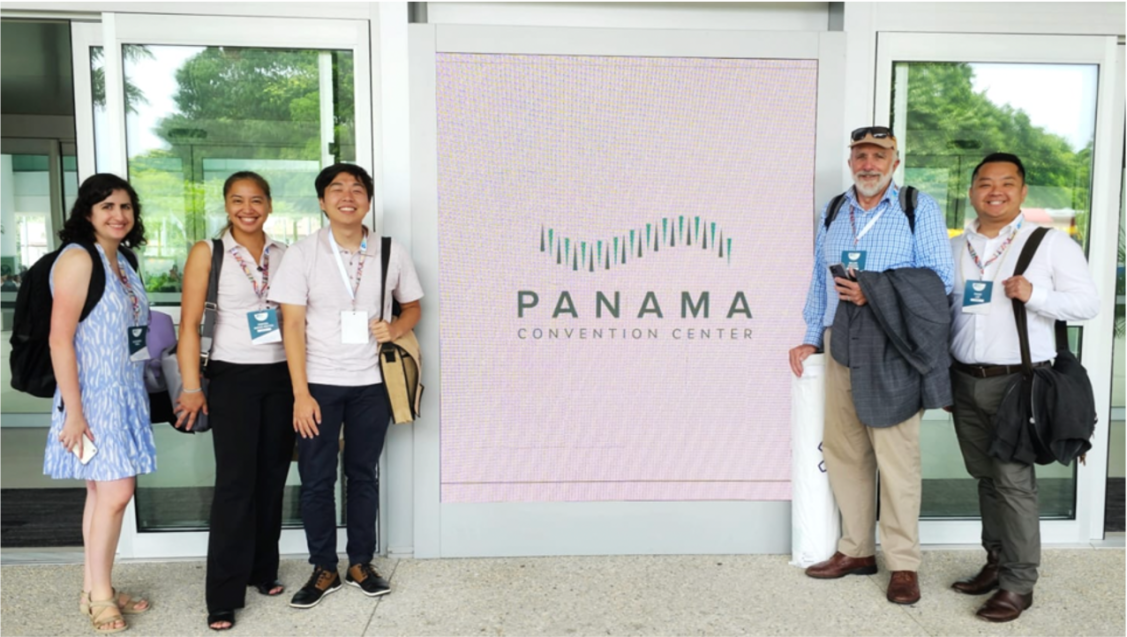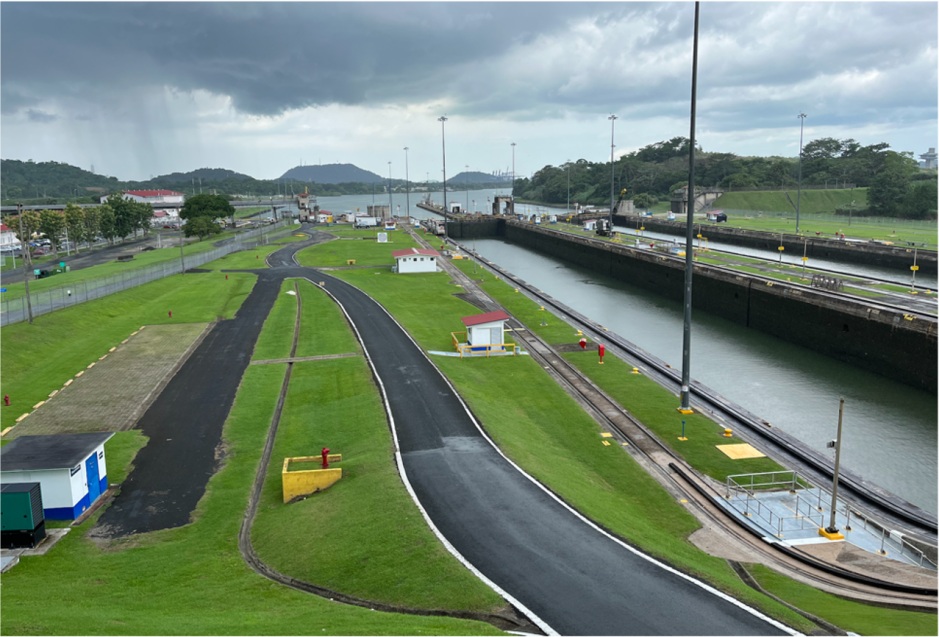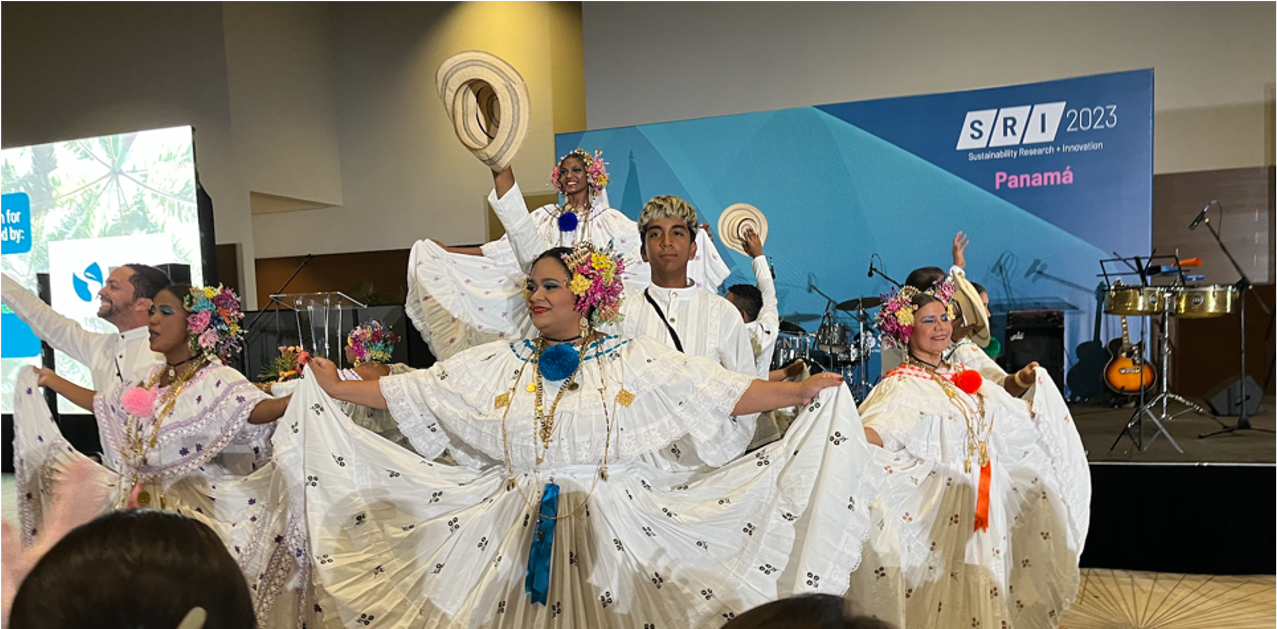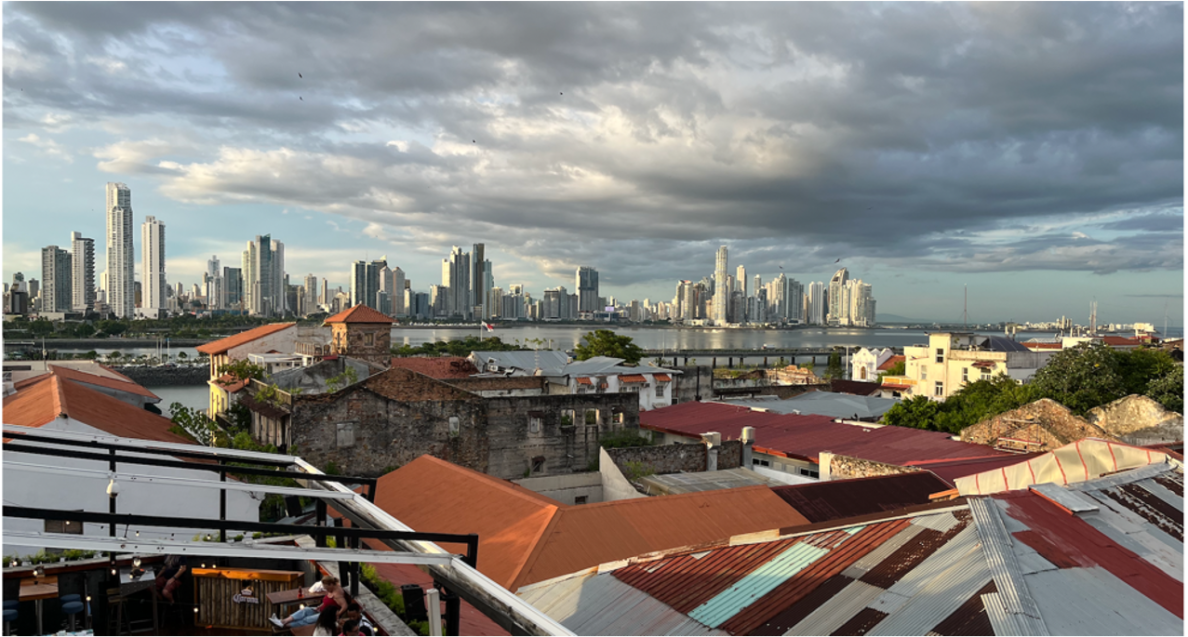Reflections on the Sustainability Research & Innovation 2023 conference
Bill Dennison ·Dr. Vanessa Vargas-Nguyen, Alexandra Fries and I represented the University of Maryland Center for Environmental Science (UMCES), Integration and Application Network (IAN), at the third annual Sustainability Research & Innovation (SRI2023) conference in Panama City, Panama. In addition, Dr. Xin Zhang and Kevin Jackson from the UMCES Appalachian Laboratory participated.

The first Sustainability Research & Innovation conference was to be held in Australia in June 2020, but COVID made an in-person conference impossible. An entirely virtual conference resulted. The second conference was held in June 2022 in Pretoria, South Africa, and it was a hybrid conference. Given the COVID rates at the time, we chose to join the SRI conference virtually. I have increasingly found virtual conference attendance to be unsatisfying, so I was glad to participate in the SRI2023 conference in person. The SRI2023 conference was held in the new grand Panama Convention Center. Our conference was only the second one held in this very impressive conference center. Since the regional focus was on Panama, Central, and South America, the conference had simultaneous translations for Spanish and English.
Back in 1996, I attended the International Coral Reef Symposium in Panama in a smaller conference center. Over the years, I returned to Panama twice to conduct research in the Smithsonian Tropical Research Institution (STRI) field laboratory at Bocas del Toro, but only passed through Panama City briefly. So the changes I observed in Panama City were over the course of 27 years. The first big difference was the Panama City skyline—the city has grown upward, with many high rises. The roads are better, but the traffic congestion is still confronting. The food offerings have diversified and improved—my first visit diet was largely rice, beans, chicken, and plantains. But now there are a diversity of restaurants offering a wide variety of excellent food options. In 1996, the Panama Canal was smaller and operated by the United States. But now the canal is operated by Panama and they completed a deepening and widening to accommodate larger container ships (Panamax). I learned that about 40 container ships pass through the canal every day and they pay roughly 1 million dollars each. That helps explain the burgeoning economy in Panama.

The SRI conference format attempts to break the monotony of PowerPoint lectures. Conference organizers solicited interactive sessions. This proved somewhat challenging since the conference was both hybrid and translated. But we successfully led workshops using the interactive role-playing game, ‘Get the Grade’, and a science communication workshop featuring our Conceptionary game and a narrative-structure activity. At the conference opening and closing, classic Panamanian dances with accompanying music showcased the historic Panamanian culture. The highlight for me was the audience participation for bongo drums and dancing at the close of the conference.

I was amazed at the similarities between the historic sections of Panama City, Manila, and San Juan. The Casco Viejo section of Panama City, the Intramuros section of Manila, Philippines, and Old San Juan, Puerto Rico have similar architecture, narrow streets, verandas, churches, public squares, tropical vegetation, and even some similar foods like rice, beans, seafood, and meat. The people of these disparate cultures actually have a similar blend of indigenous and European (mostly Spanish) bloodlines. The African influence in the Caribbean is also evident in Puerto Rico and Panama. All three cities are strategically located adjacent to a port with fortifications against invasion.

The next SRI, planned for Helsinki and Espoo, Finland on 10-15 June 2024, will be hybrid as well. My recommendation is to consider limiting the hybrid portion of the conference, rather than attempting to live stream every aspect. I also feel that having all of the plenary speakers in person is a better approach, as they can gauge the audience's response and better engage in follow-up conversations. Another recommendation is to expand the science communication and stakeholder engagement training opportunities at the conference. This recommendation is based on the attendance and enthusiasm of the participants at our session. But overall, I really like the approach of seeking interactive sessions and highlighting the regional cultures.
About the author
Bill Dennison

Dr. Bill Dennison is a Professor of Marine Science and Vice President for Science Application at the University of Maryland Center for Environmental Science.

